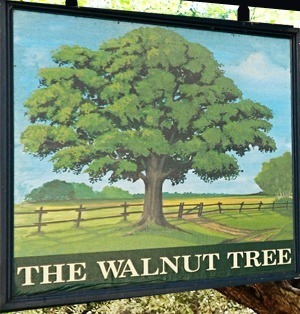
If you are lucky enough to have a kitchen garden and to grow your own rhubarb, you should be aware that a danger lurks in the form of the walnut tree. Juglone, a natural but toxic compound found in walnut trees, will kill rhubarb as it is very sensitive to it.
Juglone occurs naturally in the leaves, roots, husks, and bark of walnut trees. Technically juglone is known as a phenolic compound. It is toxic to many other plants and it can also stunt their growth; it is extracted for use as a natural herbicide to control weeds. In a garden or forest its fallen leaves will create high levels of juglone in the soil, and a walnut tree’s roots will also release the toxin.
In the wild walnut fruit-forests of Central Asia, hundreds of thousands of walnut trees (Juglans regia) grow as the main canopy tree species without competition. One of the main reasons is the high levels of toxic juglone that has built up under their canopy. It is interesting that underneath the walnut trees, some plants do thrive particularly wild apple, pear and plum. You can read more about these forests in my Walnut Expedition Journal.
 Juglone is also a very effective natural insecticide; a phenomenon observed by our ancestors. They may not have known about phenolic compounds but they recognised that horses tethered to a walnut tree would remain unmolested by buzzing insects. My view is that this is why there so many public houses in Britain named “The Walnut Tree Inn”: many of these will have been coaching inns – once a vital part of our transport infrastructure. A search on Google maps for “Walnut Tree” inn or hotel brings up hundreds of results across Britain.
Juglone is also a very effective natural insecticide; a phenomenon observed by our ancestors. They may not have known about phenolic compounds but they recognised that horses tethered to a walnut tree would remain unmolested by buzzing insects. My view is that this is why there so many public houses in Britain named “The Walnut Tree Inn”: many of these will have been coaching inns – once a vital part of our transport infrastructure. A search on Google maps for “Walnut Tree” inn or hotel brings up hundreds of results across Britain.
Gabriel Hemery
 This work is licensed under a Creative Commons Attribution- NonCommercial- NoDerivs 3.0 United States License.
This work is licensed under a Creative Commons Attribution- NonCommercial- NoDerivs 3.0 United States License.
